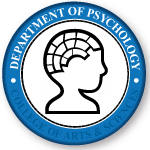Author ORCID Identifier
Reiter-Palmon https://orcid.org/0000-0001-8259-4516
Document Type
Article
Publication Date
Summer 6-2022
Publication Title
Psychology of Aesthetics, Creativity, and the Arts
Abstract
The process of problem construction is known to be a critical influence on creative problem-solving. The current study assessed the utility of different problem construction methods used to maximize creativity during the creative process. An experimental design was used to explore the interplay between convergent and divergent thinking processes. Participants were asked to creatively solve an ill-defined problem under four conditions that varied in their combinations of instruction to engage in divergent and convergent thinking. Findings indicated that following divergent thinking methods with a method that facilitates convergent thinking in problem construction results in more creative solutions than using only methods associated with divergent thinking. Theoretical and practical implications of these findings are discussed.
Recommended Citation
Wigert, B. G., Murugavel, V. R., & Reiter-Palmon, R. (2022 in press). The utility of divergent and convergent thinking in the problem construction process during creative problem-solving. The Psychology of Aesthetics, Creativity, and the Arts. https://doi.org/10.1037/aca0000513


Comments
©American Psychological Association, [2022]. This paper is not the copy of record and may not exactly replicate the authoritative document published in the APA journal. The final article is available, upon publication, at: https://doi.org/10.1037/aca0000513
Psychology of Aesthetics, Creativity, and the Arts (apa.org)
https://www.apa.org/pubs/journals/aca/index